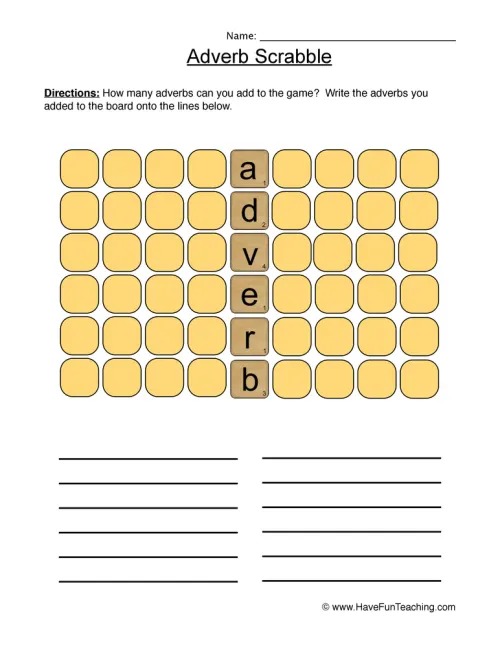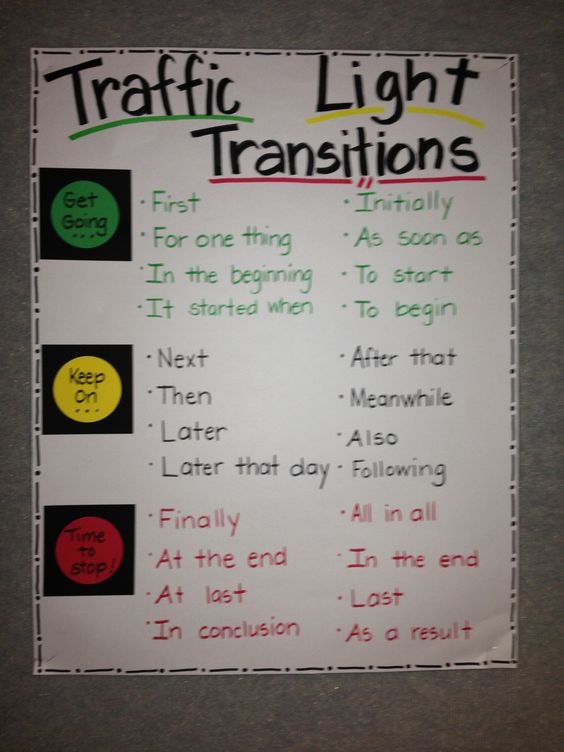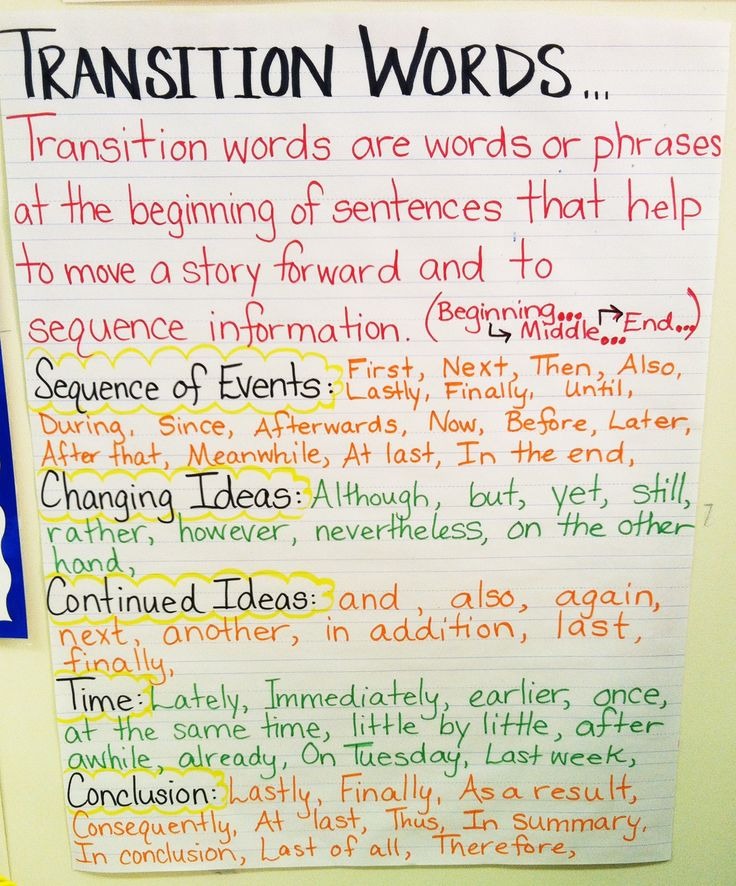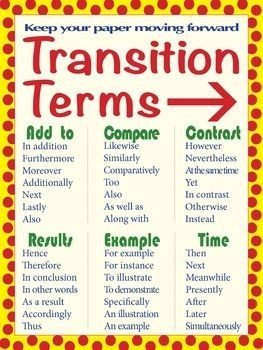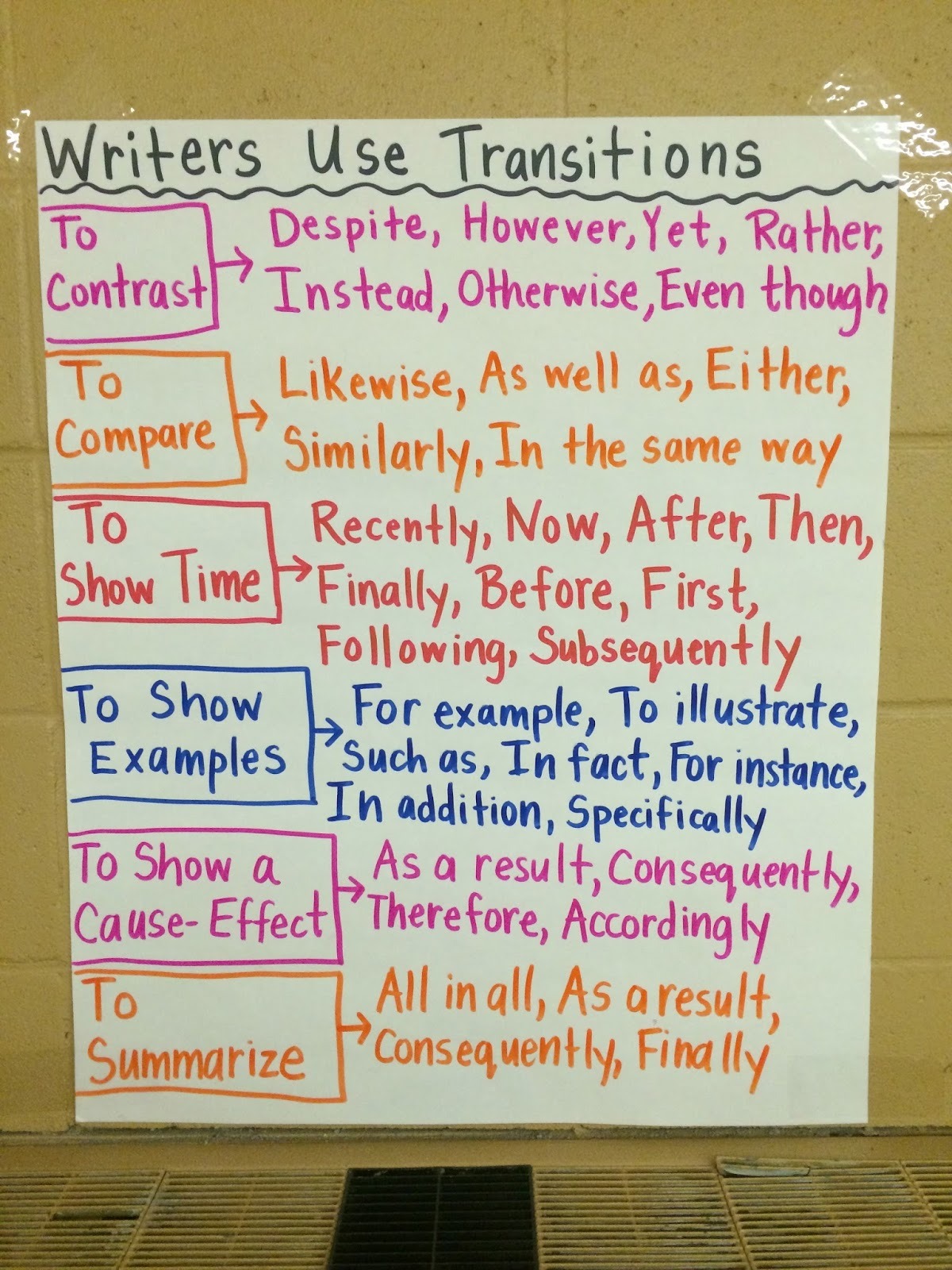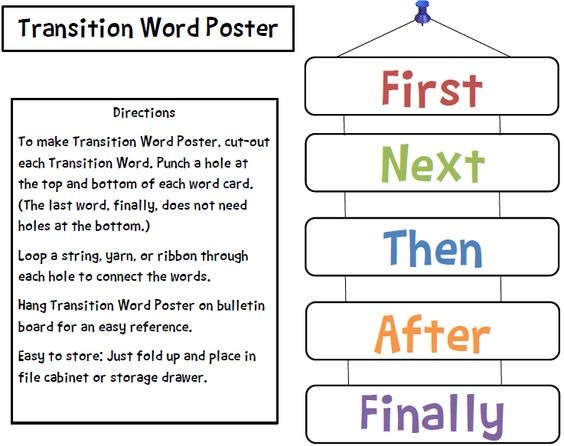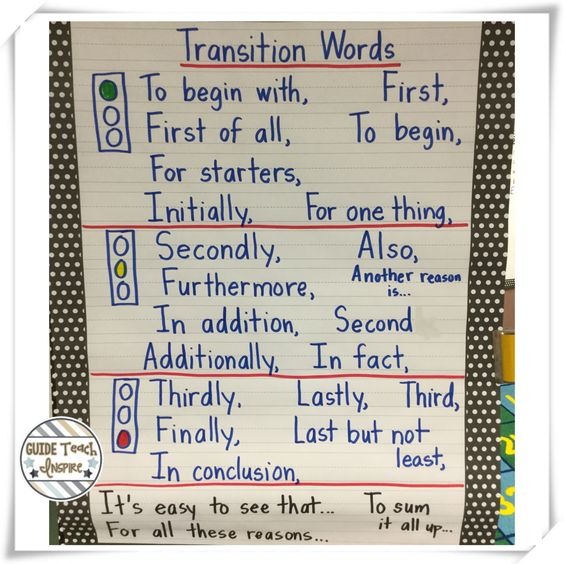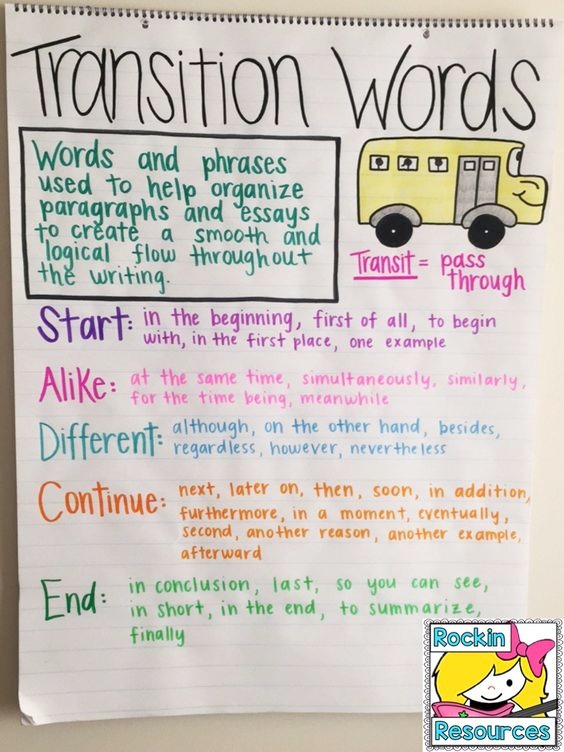The cerval took one bite. It chewed the meat. The buck had given it quite a chase. It hadn’t been quick enough. The buck lay on its side. Its eyes were staring at nothing.
I don’t think that is as effective to read as this version: The cerval took a bite and chewed the meat. Although the buck had given it quite a chase, it hadn’t been quick enough. It lay on its side, with its eyes staring at nothing.
The language flows more smoothly in this version. That is because I’ve added transition words.
In this post, I’ll unpack transition words and point you in the direction of some anchor chart ideas.
Table of Contents
- Understanding transition words
- Elements of a good transition words anchor chart
- Teaching transition words in different ways
- Transition Word Resources From Teach Simple
- Anchor Chart From Other Teachers
- Finally, wrapping up transition words
Understanding transition words
Words and short phrases that show the relationship between two parts of a sentence (phrases and clauses) or between two sentences, or between paragraphs are described as being ‘transition words’. You’ll find that these are often conjunctions and adverbs.
For example
Although she wanted to take the later train, she could not find the platform where she expected it to be. Lately, Hissy felt the presence of either the spirit or a demon, which created an atmosphere of doom, particularly in the drawing room.
Elements of a good transition words anchor chart
Because it is not easy to pin down exactly what a transition word is, or to define it precisely, a good anchor chart will need to include a lot of examples. These should be individual and in context. Most transition words only make sense to students if they see them used in sentences.
A good transition word anchor chart can be about individual transition words, such as conjunctions and adverbs. These should define the terms and their functions and give examples in context.
The anchor charts should not be confined to showing how transition words join sentences, but should also address paragraphs.
To be effective, a transition word anchor chart should have some element of interaction, so students can engage with using transition words in sentences. It is very important for them to learn transition words, because they will need to be able to identify them in context.
Teaching transition words in different ways
The traffic light
One of the favorite images used in transition word anchor charts is that of a traffic light. The comparison is between the function of each color on the light and what the transition word/s is/are used for.
The same idea can be set out and exemplified in a few different ways. The image of an actual three-color traffic light is used, with characteristics of transition words indicated next to each light:
- Green = get going, begin
- Orange = Keep going
- Red = stop, conclude
There are charts that simply use the colors to indicate specific examples of transition words. Another chart used the colors, but no image of the traffic lights.
Adverbs and conjunctions
Many transition words are adverbs or conjunctions. These are sometimes used on separate anchor charts.
A chart that indicates conjunctions, for example, may use an image of a train, where each carriage is a phrase or clause. The conjunctions then form the hitches between the carriages.
An anchor chart on adverbs may be divided into sections, each of which presents a different type of adverb. (For example: time, manner, place.) This chart will leave space for students to fill in examples of each adverb.
Another chart may combine the conjunctions and adverbs by using phrases and clauses that are missing a transition word. The students will fill in the missing words and create a completed anchor chart.
Transition Word Resources From Teach Simple
- Conjunctions: Practice And Evaluation By I Heart Grade 3
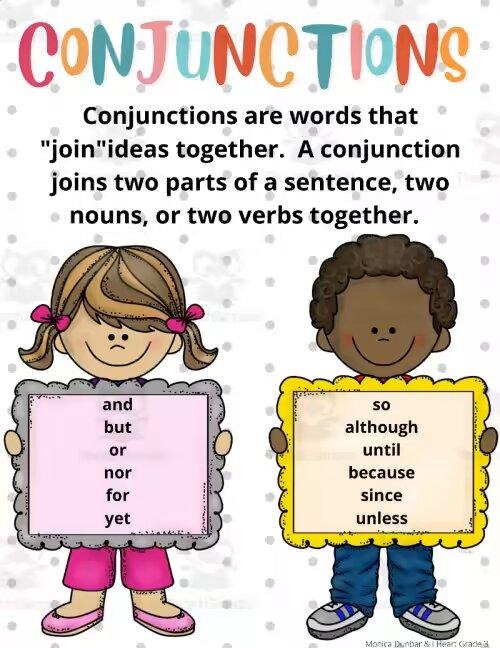
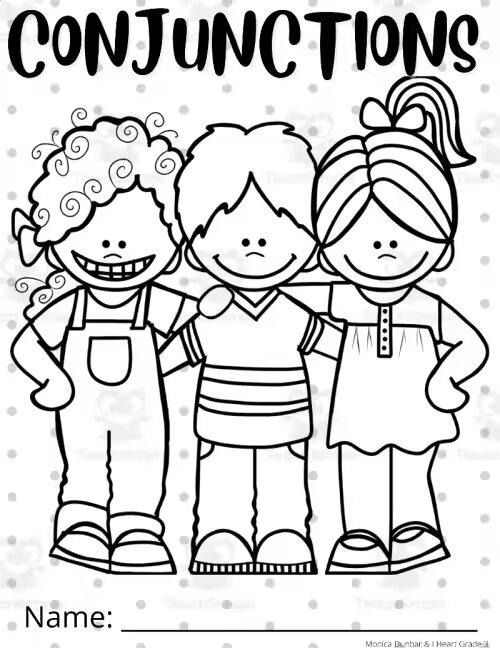
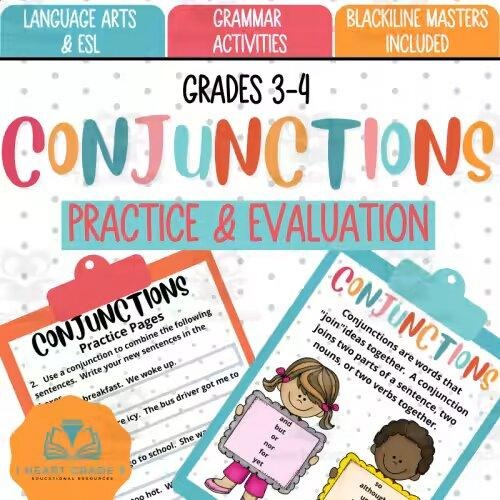
This resource is about the practice and evaluation of conjunctions. It’s aimed at grades 3 and 4. The resource consists of anchor charts, worksheets and a teacher answer key. It is a great ‘all-in-one’ resource for teaching conjunctions.
There is a close relationship between the informational chart and the exercises. You can also adapt the anchor chart by adding more conjunctions.
- Play Scrabble Adverbs Worksheet By Have Fun Teaching
This resource is a worksheet that plays scrabble with adverbs. I like the idea of beginning with a worksheet and working backwards to create an anchor chart that will give enough input so the students can be creative. The anchor chart would explain what an adverb is and give some examples. I suggest you could set out at least part of the anchor chart as a scrabble board.
Anchor Chart From Other Teachers
- Traffic Light Transitions From Weebly
This is an effective anchor chart that creates the idea of Traffic Light Transitions. Immediately, the comparison to the traffic light stands out. The three colors will be familiar to students. They will also understand the function of each color. Bringing together that knowledge and particular adverbs will allow students to understand the function of some of the transition words in writing.
- Transition Words From Quotes Gram
This chart is aimed at helping students understand how transition words link paragraphs. This is a valuable skill to learn, so that their writing flows easily. The sense of a chronology in the chart and how to use the words and phrases is important to achieve this.
- Transition Terms From The Journal Of A Sensei
This is a formal anchor chart, which lists Transition terms. You can display it as a reference from which the students can work to fill in worksheets. You can also use this as the reference point and guide them to use the transition words in sentences. They can also fill in the blanks on a worksheet with the relevant transition word/s.
- Writers Use Transitions From Kasey Kiehl’s The Literacy Effect
You will use this anchor chart when you want the students to learn to use transition words in their writing. The simple layout of the chart is effective. The speech bubbles highlight the types of transition words. You could adapt the chart by giving more information about each type of transition. Then, work with the students to find examples of each of these.
- Transition Word Poster From Teacher’s Take Out
This is a great idea for a Transition word poster in your classroom. The instructions are simple and clear. The beauty of the idea is that you can use any transition words. It will also be easy to get the students involved by making their own anchor charts, or working on one with you. They can also draw one in their workbooks and then fill it in.
- Smooth Transitions Words From Guide Teach Inspire
I like this anchor chart with the focus on Smooth Transitions. It is very simple and uses color effectively to look at the different times when one uses a transition word in writing. Your students will relate to the font and layout. It’s also easy to make this chart interactive and to work on creating one with the students.
- Transition Words From Rockin Resources
This is an effective Transition Words anchor chart. I love the use of the bus to show that the words are to do with ‘transit’ between two ‘places’ in a sentence or in writing. The colors are effective and the different types of words are shown clearly. I suggest using this as the basis for an interactive activity, where the students can find examples in texts.
Finally, wrapping up transition words
Transition words help writing to flow, but they are also not easy to define. You’ll need to create and find anchor charts that give lots of examples and help the students use them in context.

